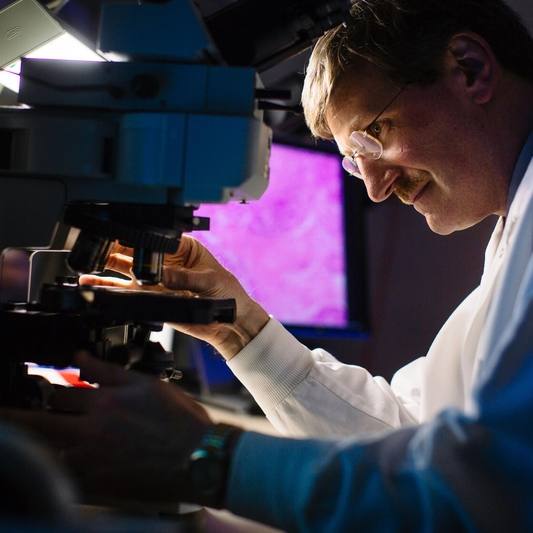-
Research
Researchers Find “Camouflaged” Gene Regions Key to Alzheimer’s and More
Despite efforts by researchers, experts are still unable to determine a genetic basis of disease for many people diagnosed. One reason: “camouflaged” genes. These are hidden chromosome regions scientists have been unable to view when searching for disease-relevant mutations.
Now, neuroscientists on Mayo Clinic’s Florida campus have unmasked these previously camouflaged areas. They discovered the problem was considerably larger – and embodies a much greater opportunity – than experts had previously imagined.

In the study, published in Genome Biology, “we were able to identify more than 6,000 genes with large regions that were previously hidden, some with great potential value for understanding disease,” says lead author Mark Ebbert, Ph.D. “As we have shared this work with colleagues at Mayo and beyond, they’ve been just as surprised as we are at the magnitude and potential implications of these findings.”
The Long and Short of It
Traditionally, genetic research has used a technology known as short-read sequencing, which is relatively inexpensive but not powerful enough to pursue the hidden gene areas. Researchers knew this but thought the hidden areas were small and therefore, less consequential. A newer and more expensive method, known as long-read sequencing, can not only see the camouflaged regions but can also detect specific mutations relevant to several important conditions such as Alzheimer’s disease. For example, in the study Dr. Ebbert and colleagues report that a top Alzheimer’s gene, CR1, was 26% camouflaged – “and the section that was camouflaged was one of the most important regions,” Dr. Ebbert says. A closer examination allowed them to identify a specific mutation that could play a key role in the condition.

“Researchers have been short-read sequencing for years, not realizing they’re overlooking huge portions of the genes,” says John Fryer, Ph.D., the study’s senior author. “We were astounded by how many parts were missing.”
The investigators hope their work will encourage more researchers to invest in long-read sequencing, which will become more readily adoptable as its costs continue to decrease over time.
Patient-First Research
This research is expected to have important implications. In the short term, understanding the genetic basis for a condition can provide comfort to patients and their families. “People experiencing a new diagnosis want to know why, and it’s really hard on them when doctors can’t provide an answer,” says Dr. Ebbert. “Comprehending the genetic cause for heritable diseases provides important answers for patients and families, and helps them heal.”
Long term, discerning the genetic basis of disease is critical for effective diagnostics and treatment. “If the mutation driving the disease is unknown, it’s going to be very hard to attack it – you’re shooting in the dark, you’re sort of blind,” says Dr. Ebbert. “Finding these mutations can change the field; knowing the mutations can accelerate the potential for therapy.”
In addition to Alzheimer’s, other conditions that may be better understood thanks to this discovery include amyotrophic lateral sclerosis (ALS), frontotemporal dementia, spinal muscular atrophy, autism, and more.
“Of course we find this work inherently interesting as scientists, but at a place like Mayo Clinic where the needs of the patient come first, that’s what’s driving us,” says Dr. Fryer. “Time will tell what the full impact of this work will be, but we hope it will make a difference for a lot of people.”







